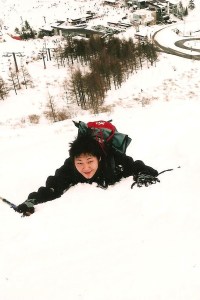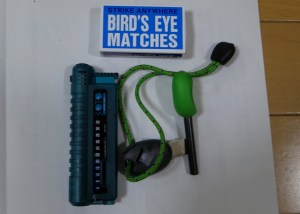The distress call was put out at 5:23pm, but it took the ambulance nearly 10 minutes to come. As I sat there, spitting my insides into the plastic bag, I wondered about the cause of my internal bleeding, and if I’d even be able to see my wonderful wife again. She was in route but it would take her over an hour to arrive, so I would tell the ambulance driver to relay the hospital information to her so we could meet up later. When the ambulance staff entered my apartment, they seemed taken aback by the pond of tomato-sauce colored fluids floating on top of my garbage pile. They escorted me to the awaiting car, took my vital signs, and started searching for a hospital that would accept me. In most countries, trained paramedics take care of patients while ambulance drivers whisk victims to the nearest hospital in a matter of minutes. Not so in Japan.
The staff started by calling all of the hospitals I had “membership” cards for: hospitals that I have visited in the past that have my information on record. I’m the unofficial king of ambulance rides, having been taken to hospital at least a dozen times over the last 6 years, so I know the procedure. Fortunately my bleeding had stopped but I was still coughing up a lot of phlegm. Since Feb. 11th was a National Holiday, a lot of doctors were not on staff, limiting my choices of available care. I needed to see a respiratory specialist, but every hospital in Osaka city turned us away, since they had no one on staff. While searching for a place to take me, I was texting Kanako, who finally arrived back at our place and joined me in the ambulance. A hospital in Takatsuki (a 30-minute drive from Osaka) agreed to accept me, but the ambulance drivers weren’t enthusiastic about taking me all the way up there. They decided to first take me to the Osaka Central Emergency Medical Clinic, an off-hours alternative to hospitals located a few blocks from where I lived. I’d get to see a throat specialist first to make sure the bleeding was coming from my lungs and not from my throat.
The ambulance staff wheeled me into the clinic, which was filled to the rafters with influenza-stricken children. There were more germs floating around here than in a scientific laboratory. They handed me off to the nursing staff, where we waited our turn to see the doctor. About 45 minutes later, I finally got a chance to see the specialist, who shoved a camera into my nose and down my throat. “It’s all clean”, he said, which confirmed my initial suspicions that my lungs were the culprit. He sent me across the hall to Internal Medicine, where I waited another half-an-hour before seeing the overworked physician. He ordered an x-ray and sent me to the other side of the clinic to the X-ray technician. I’m not sure if it was the deep breaths, the radiation exposure, or just incredibly strange timing, but as soon as the images were taken I started throwing up blood again. The technician let out a gasp and sent me back across the hall to the doctor, through the lobby of awaiting patients.
Kanako’s look of horror intensified as she saw how much blood I was spitting up. The nurses grabbed me and thrust me in front of the doctor, who ushered me into a private room away from the other patients, who by now were staring in shocked disbelief. The nurses came over and provided towels while my physician got on the phone, trying to find a hospital that would accept me. It was round 2 of our ridiculous debacle. The initial ambulance drivers had definitely weaseled their way out of the situation by abandoning me at this godforsaken clinic. The bleeding stopped again but erupted once more about 20 minutes later. This time I soaked the bed sheets and even had blood coming out of my nose because I was coughing so violently. Kanako and I started yelling at the nurses, and the doctor abandoned all of his other patients to assist. He got back on the phone, this time calling some of his personal physician friends for advice. They hooked me up to an IV to help stop the bleeding, and we finally connected with a hospital in Kishiwada city (a 30-minute drive south of Osaka) that would accept me. The doctors told me that if they couldn’t find a hospital for me then they would have no other choice than to send me home. I wanted to go to ANY hospital in Kansai, but the system doesn’t work that way. Osaka ambulance drivers are not allowed to cross prefectural borders. Even if there was a hospital in Kobe or Kyoto that would accept me, I would have no way of getting there unless I jumped on a train, crossed into the prefecture, and then called the ambulance.
The ambulance came and rescued me from the clinic at 11:30pm, preciously 6 hours after I had initially called for assistance. Japan’s emergency network works wonderfully if you follow two very important rules: 1) Don’t get sick on a weekend. 2) Don’t get sick from something that needs a specialists care. Broken bone? The Flu? No problem. A heart attack or cerebral hemorrhaging? Call the priest.
I arrived in Kishiwada and was immediately taken to my room, where the tests commenced. I had a CT scan to determine the cause of the bleeding, and a short time later a doctor came in to meet with me. He basically told me the main doctor wouldn’t be in until Tuesday, and that I could remain her for the remainder of the weekend in case my condition deteriorated. Phew, it looks like I would live through this one, at least for the time being.
(To be continued)





